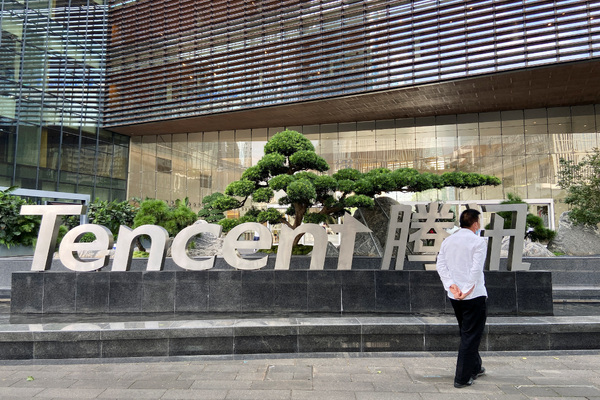Are stablecoins set to become an integral part of traditional finance?
How new legislation can take crypto and traditional finance integration beyond the point of no return

Originally, traditional banking and the world of cryptocurrencies, were built on fundamentally different models: two separate ecosystems hermetically isolated from each other.
Despite bank runs and major crises, in the context of decentralised finance, traditional banks remained the symbol and embodiment of trust and consumer protection against defaults and fraud, while crypto is regarded as a high-risk/high-yield digital asset with a short but intense history fraught with collapse.
Traditional banking has fended off crypto for about a decade, perceiving it as a speculative vehicle or even a form of gambling, despite the original intention of Bitcoin’s anonymous inventor to create a decentralised, electronic peer-to-peer cash system.
From isolation to partnering
But with demand for fiat-crypto transactions rising among clients, incumbent banks couldn’t afford to seal themselves completely off from crypto. Partnerships between established banks and crypto exchanges were typically made, albeit in fits and starts – in line with banks’ reassessments of crypto-related costs and benefits and regulators’ changing attitudes.
In a bid to make cryptocurrencies more accessible, Barclays, one of the UK’s major banks, established a partnership with Coinbase, a US cryptocurrency exchange, in 2018.
The agreement enabled Coinbase to open an account with Barclays, as well as offer its clients the option to deposit and withdraw Sterling from their Barclays account to buy and sell cryptocurrencies.
The partnership, however, ended after 18 months as a result of Barclays’ changing risk appetite.
Meanwhile, in 2021, Santander followed in Barclays’ steps as it announced blocking its retail customers from sending money from their accounts to Binance, a major crypto exchange, in the wake of FCA’s warning of a steep rise in the number of victims of cryptocurrency fraud.
Fast forward to November 2023, when Santander Private Banking International starts offering its high-net-worth clients in Switzerland – Europe’s crypto standard bearer – the opportunity to trade and invest in major cryptocurrencies.
This move, however, took place against a backdrop of intensifying cryptocurrency scams, where account holders in the UK lost £306 million in the year up to the end of March 2023, a 41 per cent increase from the previous year.
Fiat-collateralised stablecoins – the crypto foothold into traditional finance
What would make cryptocurrencies and their underlying technology, blockchain, more palatable for the regulated players of centralised finance is if their extreme volatility was reduced to a level that strong national currencies demonstrate.
Judging by the theory behind them and the name itself, stablecoins sound like a promising candidate to address volatility issues.
Stability is achieved by pegging stablecoins against fiat money – typically the dollar –commodities such as gold, or a financial instrument, for example treasury bonds.
If a stablecoin is pegged to the US dollar at a 1:1 ratio, it means that 100 stablecoins can be redeemed for the same amount of dollars, which makes conversions relatively straightforward too.
If a client deposits dollars in a stablecoin issuer’s bank account, the issuer mints an equivalent number of stablecoins for them, or burns a requested number of stablecoins if the client wants to convert them into dollars.
Stablecoins’ original purpose within the crypto ecosystem was to serve as a safe haven, where traders can withdraw their crypto assets prior to a steep fall in their value to pre-empt loss.
This mechanism enables crypto holders to move in and out of positions when there are signs of a market turbulence without leaving the crypto ecosystem.
Thanks to their price stability, stablecoins also form the backbone of decentralised finance (DeFi) – they are extensively used as collateral on lending and borrowing platforms and play a central role in providing liquidity for decentralised exchanges.
Stablecoins can be collateralised, not just with fiats but with other crypto currencies too, while some others control their value algorithmically. These breeds of stablecoin, however, come with much higher risk and volatility than those pegged to dollar or the euro. In their current form, they are not suitable candidates for adoption by traditional finance.
Terra Luna, the stable coin that crashed in May 2022, was, for example, pegged against its sister crypto, TerraUSD. Meanwhile, Tether’s USDT and Circle’s USDC, the two stablecoins with a combined market cap accounting for 86 per cent of the entire stablecoin market, are both fiat-collateralised stablecoins.
Can the future bring full integration?
Fiat-backed stablecoins have so far had two interfaces with centralised finance.
Not only do stablecoin issuers create partnerships with banks to enable account holders to easily buy and sell crypto assets, they often also keep the dollars that serve as collateral to their stable coins in incumbent banks or other centralised financial institutions.
These interfaces between the two financial ecosystems come with the risk that a collapse or malfunction taking place in one will spill over to the other.
Although harsh winds from traditional finance hitting the crypto world are the less expected direction of travel for financial turbulence, this is what happened in March 2023, when Silicon Valley Bank (SVB) crashed.
As a result, cryptocurrency issuer Circle’s USDC lost its peg to the dollar when its value fell sharply, as a significant percentage of its dollar reserves was held by SVB.
Regulators are also acutely aware of what financial experts call a contagion channel, and push for measures that can prevent turbulence in the digital asset sector from spreading into the traditional financial system and throwing it out of kilter.
Therefore, the integration of decentralised and centralised finance can only continue in a highly regulated environment.
This is the kind of setting that the EU’s Markets in Crypto-Assets (MiCA) regulation aims to establish, and what the UK’s delayed legislation on stablecoins should create.
Only with relevant and well-balanced regulation in place can stablecoins and the blockchain technology they run on cross over into traditional finance and fulfil their most disruptive use cases as an alternative payment method and a new, fast and cheap payment rail.
Although regulation can indeed stand in the way of adoption and stifle innovation, it is a prerequisite for regulated financial institutions to strategically enter the space rather than flitting in and out of it.
PayPal, a leading global electronic money institution and payment provider regulated by the Consumer Financial Protection Bureau in the US and the FCA in the UK, already launched its stablecoin, PYUSD, in August 2023.
A year later, in September 2024, news came that PayPal had completed its first business payment using its in-house PYUSD, to accounting giant EY.
In the meantime, Circle’s French entity became the first global stablecoin issuer to achieve compliance with MiCA in July 2024.
Several banks, whether traditional, such as Spain’s BBVA, or digital, such as Revolut, have projects in the pipeline that involve compliance with MiCA and the issuance of their own stablecoins.
If MiCA can bring about the breakthrough it was designed to, a growing number of regulated financial institutions can be expected to offer their customers the whole gamut of financial offerings, merging traditional banking services with innovative blockchain and stable coin driven solutions.

Zita Goldman
Most Viewed
Winston House, 3rd Floor, Units 306-309, 2-4 Dollis Park, London, N3 1HF
23-29 Hendon Lane, London, N3 1RT
020 8349 4363
© 2025, Lyonsdown Limited. Business Reporter® is a registered trademark of Lyonsdown Ltd. VAT registration number: 830519543





